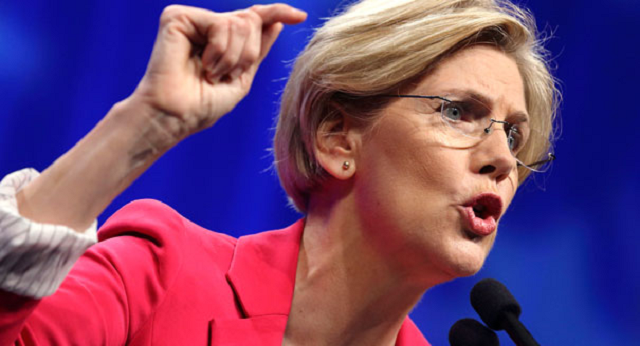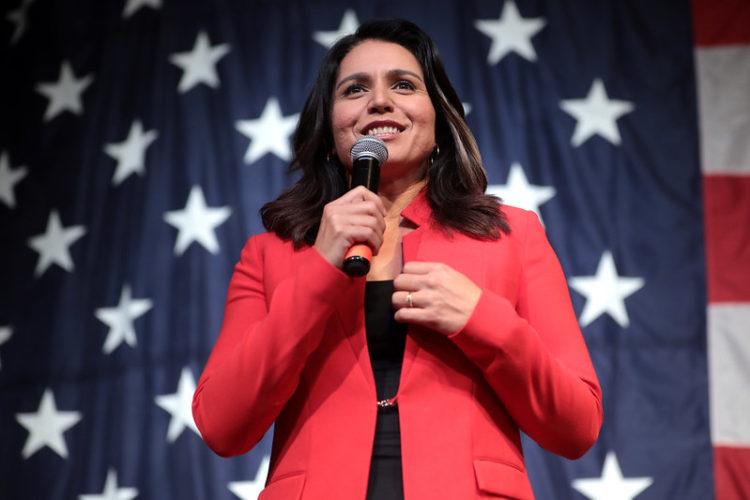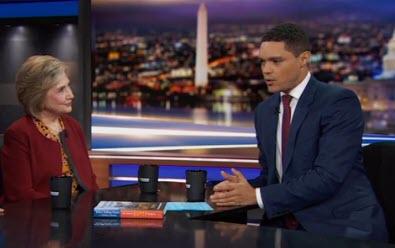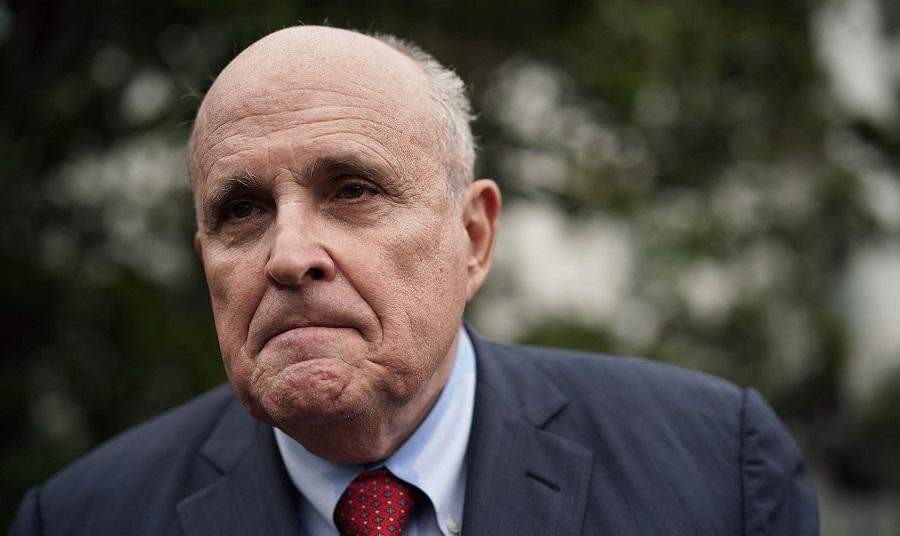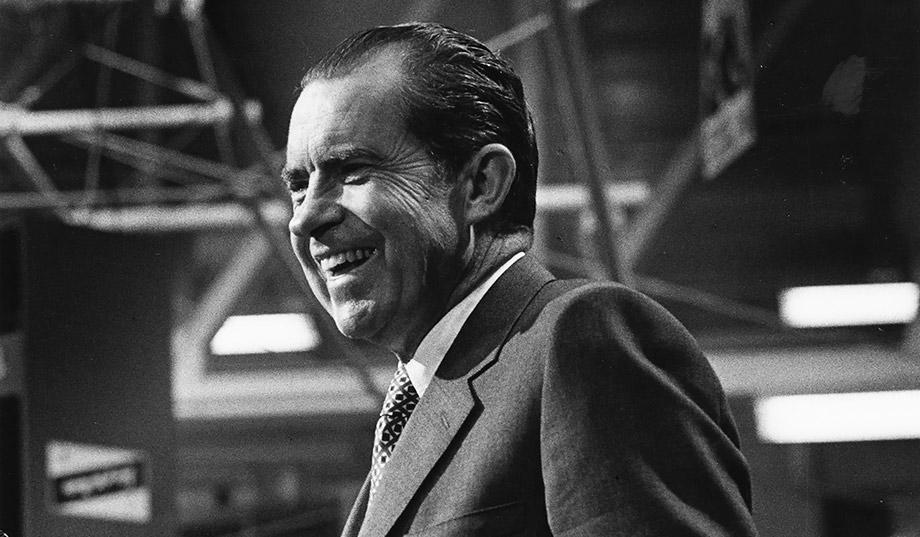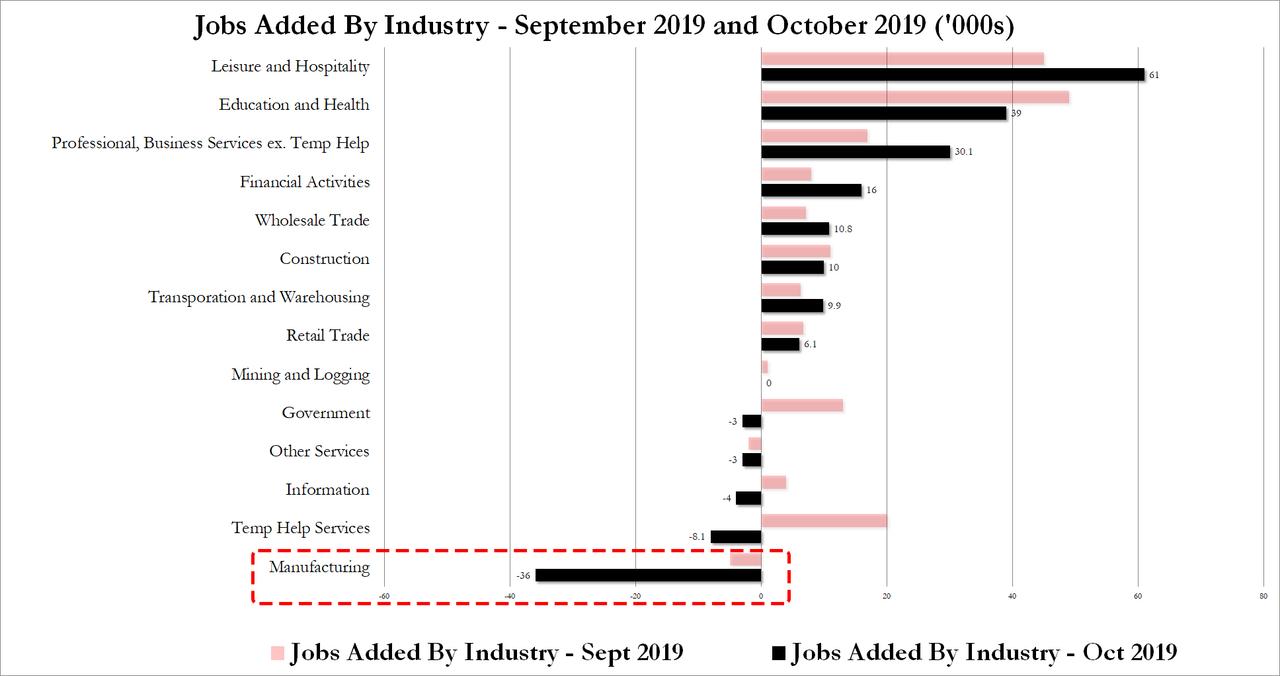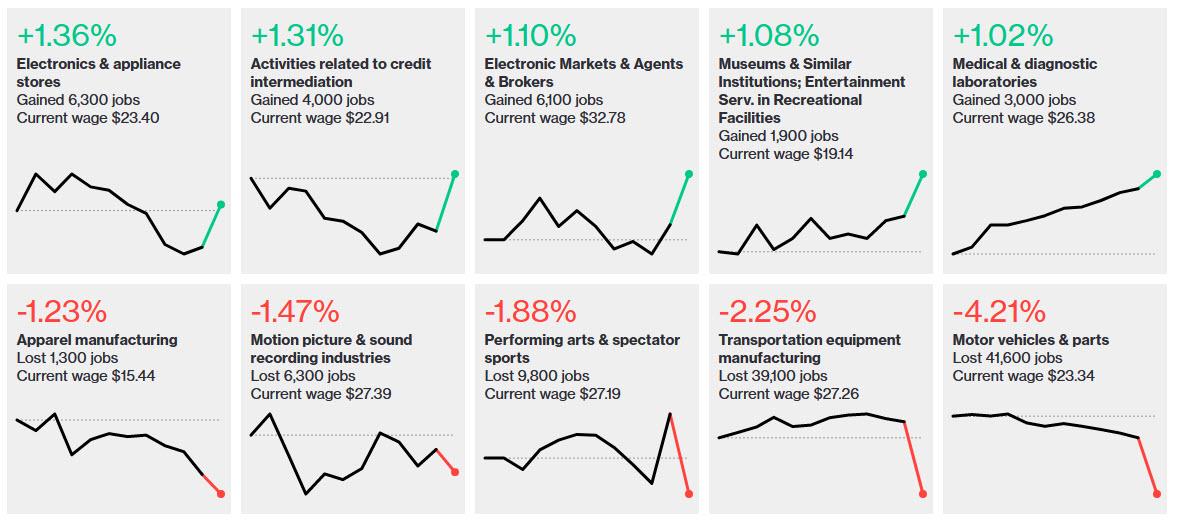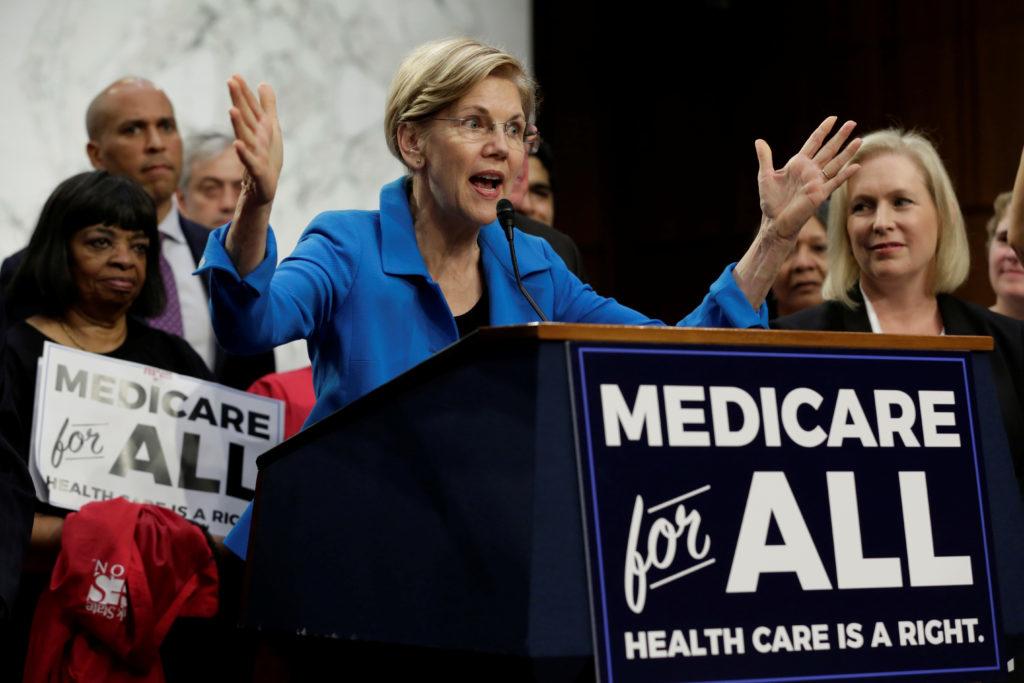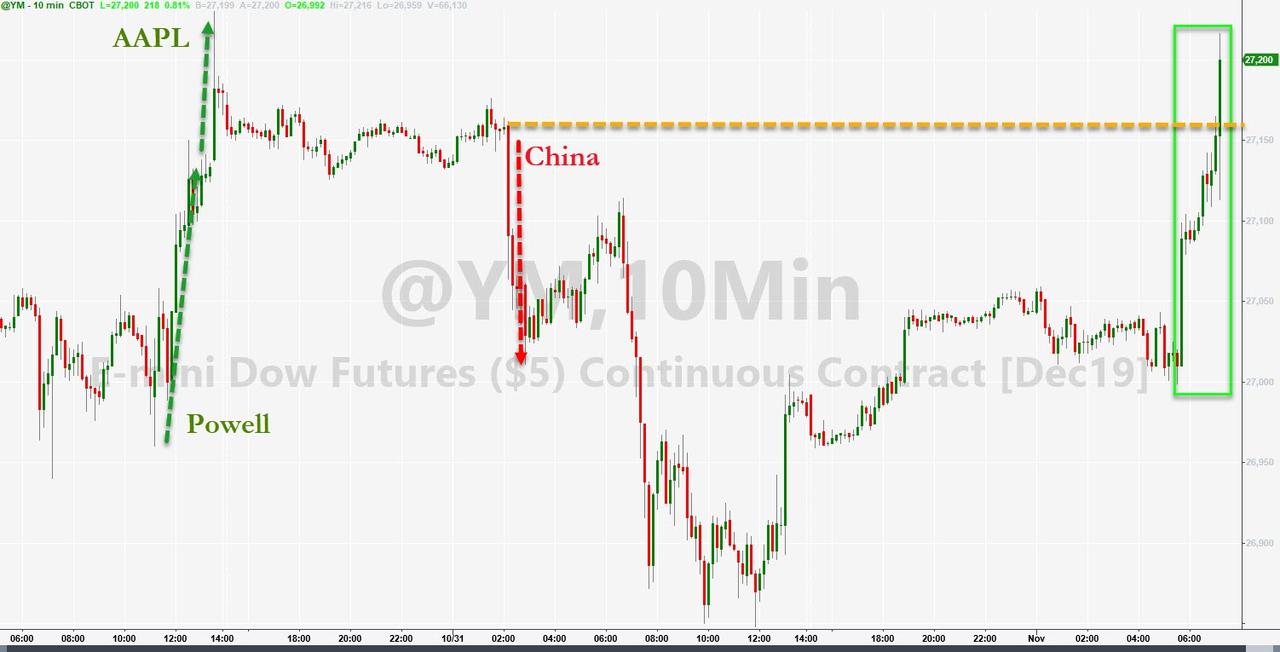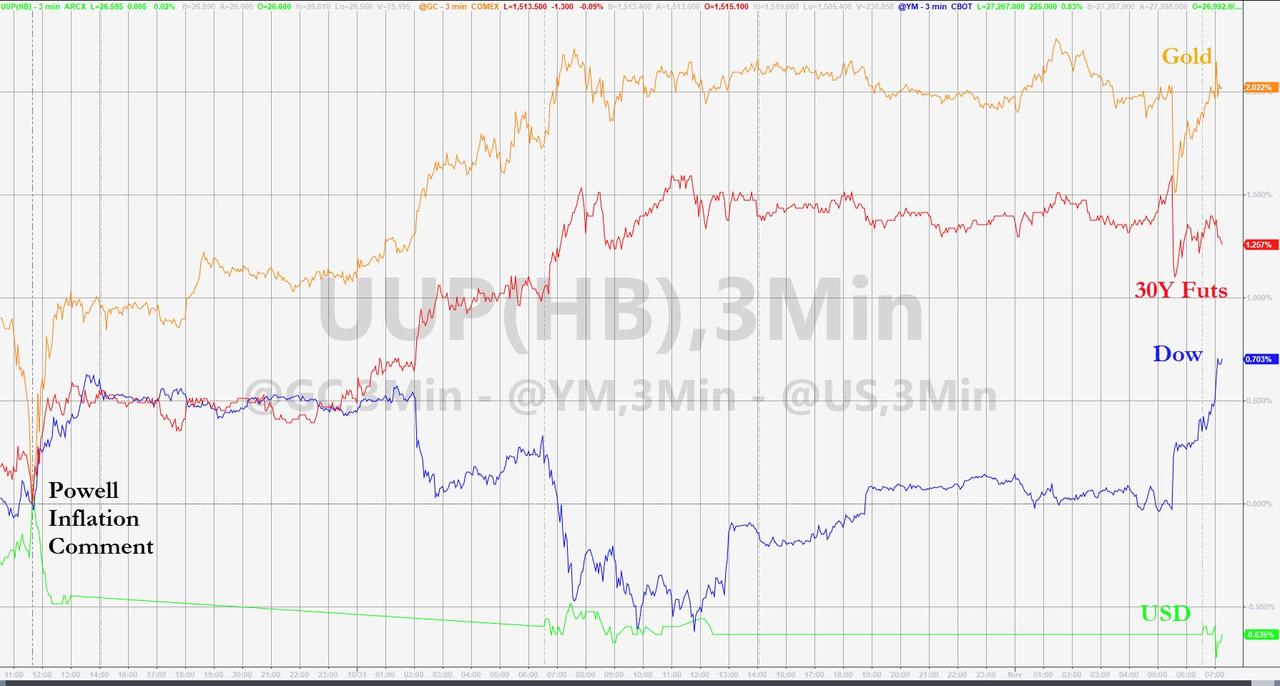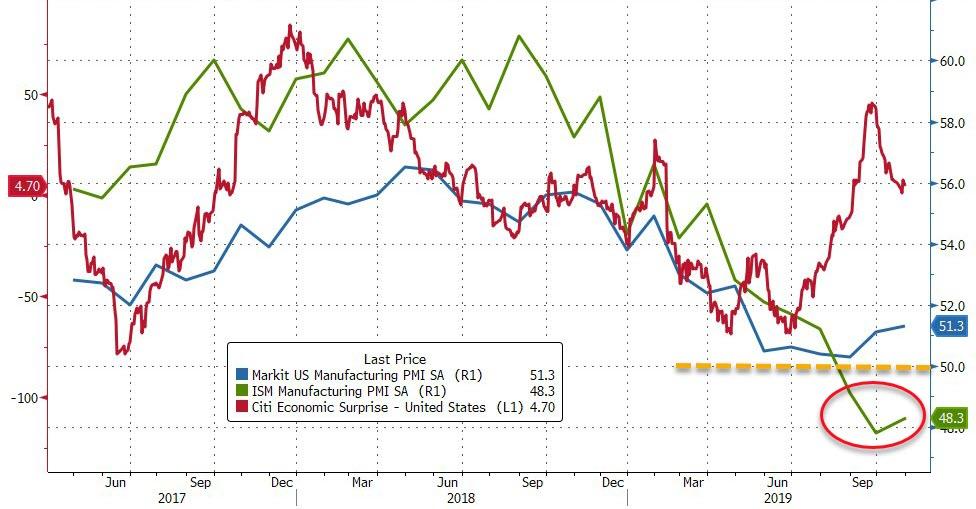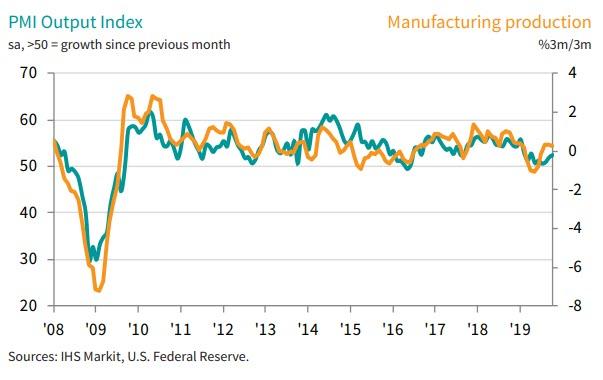Cooperman-Warren War-Of-Words Escalates: “You’re Either Grossly Uninformed Or Warping Facts For Political Gain”
Billionaire hedge fund manager Leon Cooperman recently told Politico that, while he believes in a “progressive income tax and the rich paying more,” he disagreed with much of Warren’s approach.
“But this is the f—ing American dream she is s—-ing on,” he told the publication.
Warren later fired back in a tweet, suggesting Cooperman should “pitch in a bit more.”
Leon, you were able to succeed because of the opportunities this country gave you. Now why don’t you pitch in a bit more so everyone else has a chance at the American dream, too? https://t.co/OODIM7RcRn
— Elizabeth Warren (@ewarren) October 23, 2019
Cooperman rapidly penned a 5-page letter (below) to Warren explaining his disagreements with her recent criticisms of the influence of wealthy business leaders and her economic policy proposals, the investor said.
“However much it resonates with your base, your villification of the rich is misguided, ignoring, among other things, the sources of their wealth and the substantial contributions to society which they already, unprompted by you, make.”
The hedge fund manager took particular umbrage at Warren’s seeming hatred and disdain of all billionaires:
“Their stories, and many more like they are the very embodiment of the American Dream. For you to suggest that capitalism is a dirty word and that these people, as a group, are ingrates who didn’t earn their riches through strenuous effort and (in many cases) paradigm-shifting insights, and now don’t pull their weight societally indicates that you either are grossly uninformed or are knowingly warping the facts for narrow political gain.“
Cooperman offers an olive branch:
“The fact is, Senator Warren, that despite our philosophical differences, we should be working together to find common ground in this vital conversation – not firing off snarky tweets that stir your base at the expense of accuracy,” he writes.
“Let’s elevate the dialogue and find ways to keep this a land of opportunity where hard work, talent and luck are rewarded and everyone gets a fair shot at realizing the American Dream.”
We suspect the optics of Warren taking on a billionaire hedge fund manager is just too good for her to de-escalate – this war-of-words is far from over.
* * *
Full Letter below:
Dear Senator Warren:
While I am not a Twitter user, several friends passed along to me your October tweet in which, after correctly observing that my financial success can be attributed, in no small measure, to the many opportunities which this great country has afforded me, you proceeded to admonish me (as if a parent chiding an ungrateful child) to “pitch in a bit more so everyone else has a chance at the American dream, too.” Our political differences aside, your tweet demonstrated a fundamental misunderstanding of who I am, what I stand for, and why I believe so many of your economic policy initiatives are misguided. Because your tweet was publicly disseminated, I feel compelled to respond in the form of an Open Letter for all who are interested to read.
As I have noted elsewhere, mine is a classic American success story. I have been richly rewarded by a life of hard work combined with a great deal of good luck, including that to have been born in a country that adheres to an ethos of upward mobility for determined strivers. My father was a plumber who practiced his trade in the South Bronx after he and my mother emigrated from Poland. I was the first member of my family to earn a college degree. I benefitted from both a good public education system (all the way through college) and my parents’ constant prodding. When I joined Goldman Sachs following graduation from Columbia Business School, I had no money in the bank, a negative net worth, a National Defense Education Act student loan to repay, and a six-month-old baby (not to mention his mother, my wife of now 55 years) to support. I had a successful, near-25 year run at Goldman before leaving to start a private investment firm. As a result of my good fortune, I have been able to donate in philanthropy many times more than I have spent on myself over a lifetime, and I am not finished; I have subscribed to the Buffett/Gates Giving Pledge to ensure that my money, properly stewarded, continues to do some good after I’m gone. As I told Mr. Buffett when I joined the Pledge, asking for half of my money wasn’t enough; I intend to donate substantially all of it, Apart from my children and grandchildren, I cannot imagine a finer legacy.
My story is far from unique. I know many people who are similarly situated, by both humble origin and hard-won accomplishment, whose greatest joy in life is to use their resources to improve their communities. Many of their names — including those of Ken Langone, Carl Icahn and Sandy Weill, all self-made billionaires whom I am proud to call friends — are associated with major hospitals (NYU Langone Health, Icahn School of Medicine at Mount Sinai, Weill Cornell Medical College, and, in my own case, Saint Barnabas Medical Center and Boca Raton Regional Hospital) which tend to the needs of, among others, many thousands of poor patients each year who could not otherwise afford the best-of-class medical services that those fine institutions, with our support and that of others like us, provide.
Having grown up without much money and valuing highly the public education I received, have donated substantial sums to Hunter College of the City University of New York and to Columbia University’s Graduate School of Business —money for scholarships, libraries, and the construction of new buildings. In 2014, with a very large gift, I established Cooperman College Scholars, a program which identifies academically talented, highly motivated students of Strong character in Essex County (including Newark), New Jersey, who are traditionally underrepresented in higher education. children of color, impoverished children, children facing situational challenges that tug them away from educational priorities — and, through a contribution of high-school counseling, tuition grants, and ongoing cohort-based mentoring to help matriculated students navigate the challenges of transitioning successfully to college life — and by eliminating the negative impact of insufficient financial aid and social support systems on student persistence and graduation rates — enables them to attend college, thrive there and graduate. It is our goal to put 500 district and charter public-school students through college in the next few years. As I stated when my gift was announced, for splendid youngsters such as these to be denied access to a higher education, and to all the opportunities that that can afford, simply because of financial need is a national tragedy. My family feels very privileged to be in a position where we can help at least some of these children’s dreams•come true, and in the process fundamentally change their lives.
However much it resonates with your base, your vilification of the rich is misguided, ignoring, among other things, the sources of their wealth and the substantial contributions to society which they already; unprompted by you, make. Typically, unless born to money or married into it, people become rich by providing a product or service that others want and are willing to pay for.
-
Ken Langone, Bernie Marcus and Arthur Blank founded Home Depot in 1978 with $2 million raised from 40 friends — none of whom were wealthy by your standards (average investment $50,000) — after Bernie (age 49) and Arthur (age 36) had been fired from their previous jobs and — with three children each, no health insurance, no savings, and heavily mortgaged homes — were effectively broke. The rest is history. From nothing, Home Depot has grown into an enterprise with market capitalization of over $250 billion that provides employment to more than 400,000 workers thousands of Whom became millionaires investing in the company’s stock — while the founders have given away in excess of $1 billion in charitable donations (and still counting).
-
In 1981, Mike Bloomberg, whose record of public service and philanthropy are legendary, created a machine that changed the way the financial world —a sector that is the source of much of the tax revenues that fuel your legislative priorities — conducts business. Today, Bloomberg L.P. has morphed into a diversified financial-services company that employs 20,000 people.
-
In 1998, computer scientists Larry Page and Sergey Brin, while still in graduate school, founded Google, now one of the foremost search engines that power the Internet. Today, Google employs more than 100,000 workers, and Page and Brin have donated billions of dollars each to charitable causes.
The list goes on of self-made billionaires — Bill Gates (Microsoft Corporation 144,000 jobs), Michael Dell (Dell Technologies – 145,000 jobs), Mark Zuckerberg (Facebook 39,000 jobs) and Larry Ellison (Oracle Corporation — jobs), among others — who have built huge businesses from the ground up, providing jobs and economic opportunity to hundreds of thousands of taxpaying workers, and voluntarily gift every year, in the aggregate, billions of dollars back to the society that nurtured their success. Their stories, and many more like they are the very embodiment of the American Dream. For you to suggest that capitalism is a dirty word and that these people, as a group, are ingrates who didn’t earn their riches through strenuous effort and (in many cases) paradigm-shifting insights, and now don’t pull their weight societally indicates that you either are grossly uninformed or are knowingly warping the facts for narrow political gain.
Now for your soak-the-rich positions on taxes and economic policy.
The two University of California at Berkeley economists who are advising your campaign, Emmanuel Saez and Gabriel Zucman, have drawn a lot of media attention for their contention that the U.S. federal income tax system is flat, which is to say, regressive and therefore fundamentally unfair to low-income Americans. But their analysis is open to challenge, and the conclusions which they (and you) draw from it are debatable.
-
As others have pointed out, Saez and Zucman focus on gross, not net, taxes, ignoring transfer payments (Social Security, Medicare and Medicaid benefits) which are disproportionately paid to the poor and middle class, and whose inclusion in their tax-burden calculations would materially skew the outcome in the opposite direction.
-
They include excise and taxes which are by their nature regressive (and therefore overstate the outsized tax burden on low-income Americans) but have nothing to do with federal fiscal policy and tax-code structure — it’s simply how state and local governments have chosen to fund themselves; excluding those and similar taxes from their analysis would again yield a result counter to the economist’s thesis.
-
By focusing on current-year rather than lifetime tax burdens, Saez and Zucman understate taxes on the rich (who are taxed both on current year’s income and on future dividends, interest arid capital gains earned on savings) and overstate those on the poor and middle class (since future transfer-payment benefits, which as noted are excluded from the economists’ calculations, comprise an increasing share of their financial resources as they age).
In sum, Saez and Zucman’s economic model appears to be based on highly dubious assumptions and tailored to promote a specific “progressive” policy agenda, and their conclusions are far less definitive and unequivocal than they maintain.
Further undercutting your economists’ fair-share arguments, the Internal Revenue Service recently released data that detail, for tax year 2016 (the latest year for which these data are available), individual federal income tax shares according to income percentile.
-
As a percentage of total individual federal income taxes paid, the top 1% of taxpayers paid a greater share of that total (37 than the bottom 90% combined (30.5%).
-
As a percentage of taxpayers’ adjusted gross income paid in individual federal income taxes, the top 1% of taxpayers paid an effective tax rate (26.9%) which was more than seven times higher than that of the bottom 50% (3.7%).
-
The top 50% of taxpayers paid 97% of all individual federal income taxes; the bottom 50% paid the remaining 3%.
As analyzed by the Tax Foundation, a leading independent tax-policy nonprofit, the data demonstrate “that the US. individual income tax continues to be very progressive, borne primarily by the highest income earners.”
Saez and Zucman surface again in the debate over an explicit, recurring wealth tax (as distinct from property and one-time estate taxes — alternative forms of levy on wealth) targeting the richest Americans, e major plank of your economic platform. As numerous economists (if not yours) have observed, the history and prognosis of explicit wealth taxes is not sanguine.
-
In a February 2018 article for the International Monetary Fund, the authors, economists James Brumby and Michael Keen„ noted that “there are now very few effective explicit wealth taxes in either developing or advanced economies; Indeed between 1985 arid 2007, the number of OECD countries with an active wealth tax fell from twelve to just four. And many of those were, and are, of limited effectiveness.”
-
At a recent conference sponsored by the Peterson Institute for International Economics; Saez and Zucman debated their advocacy of:a wealth tax with Harvard economists Lawrence Summers (Bill Clinton’s Treasury Secretary and Barack Obama’s Director of the National Economic Council) and Gregory Mankiw (George W. Bush’s Chair of the Council of Economic Advisers). Your made the case that federal tax revenues should be raised to finance increased expenditures on education, infrastructure and healthcare subsidization but:as Mankiw and Summers argued, whether an explicit wealth tax is the preferred route is at best questionable — plagued by issues of constitutionality, tax avoidance, asset valuation and administrability — and the assumptions underlying Zucman’s analysis are,:as noted, suspect. As Summers put it: “For progressives to use their energy on a proposal that has a more than 50% chance of being struck down by the Supreme Court, little chance of passing through Congress, and whose revenue-raising potential is very much in doubt, is to potentially sacrifice immense opportunities.”
The opportunities to which Summers was referring — opportunities to raise funds for a more progessive legislative agenda that might stand a chance of passing Congress and weathering constitutional scrutiny, and whose revenue-raising potential is unquestionable — could include eliminating the exemption of capital gains from taxation upon death, the carried-interest exemption for private equity and hedge funds, and the capital-gains tax-deferral preference accorded like-kind exchanges under Section 1031 of the Internal Revenue Code.
It may be worth considering that wealth redistribution advocates might be wrong to focus solely on income inequality rather than on income opportunity more broadly. In economics, the most commonly used gauge of economic inequality across a target population is the Gini coefficient (or Gini index), named for the Italian statistician who developed it in 1912. A Gini coefficient of means the country has perfect equality of financial prosperity; a coefficient of one means maximum inequality. The World Bank, in its Gini coefficient-by-country analysis for 2019, ranks a number of countries — including Afghanistan, Albania, Algeria, Kyrgyzstan, Romania, Slovakia, Slovenia and Ukraine, all with Gini coefficients in the 20s — high on its financial equality list. Yet despite the relatively high degree of financial equality implied by their numbers, none of these countries can boast booming economies or generalized income and wealth-creation opportunities. It would therefore appear that may be more aligned than those of most other countries in the fair distribution of wealth, but that does not translate in any meaningful sense into widespread prosperity. So what good is income equality to them? Should that — the narrowing of income inequality as an end in itself, as opposed to income growth for all — really be our fiscal policy imperative?
And that takes me to my final points — what I do, in fact, believe should be our fiscal policy priorities:
-
Rather than adopt an explicit wealth tax whose efficacy has been widely debunked by experience around the world, let’s debate what the maximum individual and corporate: tax rates should be. I believe in a progressive income tax structure. The wealthy should pay more than those of lesser means, but they already do, and at some point, higher effective (federal, state and local combined) rates become confiscatory. That should never be the ethos of this country, I am on record as: having said that I don’t mind working six months of the year for the government and six months for myself, paying an effective combined tax rate of 50% off my income. But many who live in high-tax cities and states pay even more, while some of the nation’s highest earners pay less. A more effective way than a tax to right-size the latter imbalance might be to revisit some form of the Buffett Rule (repeatedly rejected by Congress since it was first proposed in 2012), which would implement a surtax on taxpayers making over a million dollars a year to better ensure that the highest earners pay their fair share.
-
Let’s eliminate loopholes in our code that allow so much seepage through the cracks. A good start would be the short-list enumerated several above.
-
Before levying more taxes of any stripe, candidates should commit to trying to fund their agendas through revenue-neutral proposals that would cull bureaucratic waste. I have seen too much evidence of governmental profligacy to have much faith in Congress’s ability to spend our tax revenues efficiently Frustrated efforts to privatize the U.S. Postal Service, which loses billions of dollars a year as a government-owned corporation, are a case in point. Social progress does not have to come at the cost of further administrative bloat.
I am a registered Independent who votes the issues and the person, not the party. The fact is, Senator Warren, that despite our philosophical differences, we should be working together to find common ground in this vital conversation — not firing off snarky tweets that stir your base at the expense of accuracy. Let’s elevate the dialogue and find ways to keep this a land of opportunity where hard work, talent and luck are rewarded and everyone gets a fair shot at realizing the American Dream.
Sincerely,
Leon G. Cooperman
* * *
This is not the first time Cooperman has written to politicians. In November 2011, a year before President Barack Obama was reelected, Cooperman previously wrote a critical letter accusing Obama and his allies of encouraging “class warfare.”
“What does matter is that the divisive, polarizing tone of your rhetoric is cleaving a widening gulf, at this point as much visceral as philosophical, between the downtrodden and those best positioned to help them,” Cooperman wrote at the time.
“With due respect, Mr. President, it’s time for you to throttle-down the partisan rhetoric and appeal to people’s better instincts, not their worst,” he added.
Seems, looking back, that Cooperman was dead right then (and will likely be right again in November if Warren is elected).
Tyler Durden
Fri, 11/01/2019 – 12:10
via ZeroHedge News https://ift.tt/3379tuB Tyler Durden
